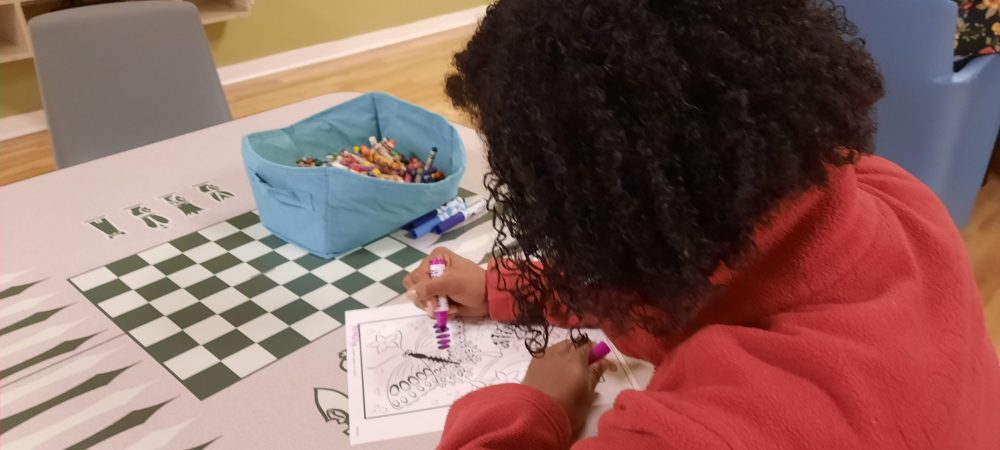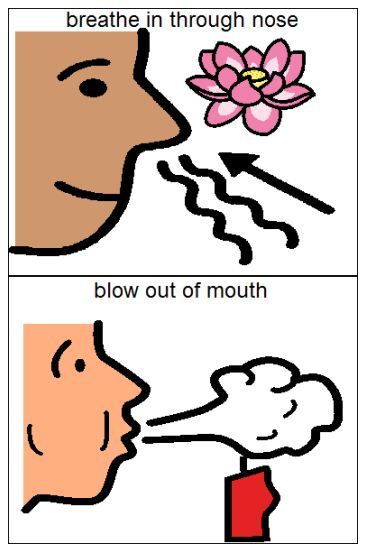Occupational Therapy Helps Children Succeed in ‘Occupation of Life’

A child receiving services through the SECU Youth Crisis Center, a Monarch program in Charlotte, completes an occupational therapy exercise that will aid in her recovery.
Occupational therapy (OT) is traditionally thought of as a treatment for adults who are recovering from illness or injury, but it is also improving the lives of children served by Monarch who are healing from mental illness.
In fact, the American Occupational Therapy Association (AOTA) conducted a 2020 review of 196 articles about youth receiving OT and discovered that “a variety of interventions within the domain of occupational therapy were found to support the development of cognitive, motor, social-emotional and self-care skills.”
Elizabeth Filiaggi, OTR/L, occupational therapist at the SECU Youth Crisis Center (SECU YCC), a Monarch program in Charlotte, says OT can help children and adolescents live their best lives.
“What I like to tell people when it comes to occupational therapy is you have to focus on the occupation of life, depending on where you are in the timeline of life,” says Filiaggi, who works with young children and teenagers. “You have different things that you want to accomplish during that time frame. Sometimes we are given those tools, sometimes we are not. Occupational therapists are there to help you gain that skill set and live life to the fullest.”

This graphic, reprinted from Early Years Learning, illustrates an example of the Picture Exchange Communication System (PECS), which uses an image to help a child better understand what their occupational therapist is teaching.
In its simplest terms, occupational therapists help people participate in the things they want and need to do through therapeutic use of everyday activities (occupations), according to the AOTA. Those activities may include self-care routines like getting dressed, writing, or holding and controlling a pencil.
Charley Cross, OTR/L, who serves people we support at Monarch’s Certified Community Behavioral Health Clinic (CCBHC) in Stanly County, says OT is critical to helping both youth and adults reach their fullest potential. Monarch started incorporating OT into mental health and substance use disorder treatments in 2020 at its CCBHC.
“The short and the sweet of it is being able to find success in anything that you want to do as a part of life,” Cross says. “It ranges from your basic self-care, getting up and getting dressed, to complex things like managing a household, caring for children or parents, or anything like that.”
Filiaggi says the treatment goals for people we serve may vary. The goals for adolescents and teenagers at the YCC usually center around getting the youth out of crisis and back in their homes or linking them with the other resources they might need to be successful.
“When it comes to OT, there’s no actual cookbook,” Filiaggi says, adding that treatment is tailored to fit the patient. One of the individualized treatments is the use of the Picture Exchange Communication System (PECS), which is images to help a child better understand what their therapist is teaching. A picture (at right) illustrates breathing in through the nose and out through the mouth that can help a child understand a calming technique.
Posted on: Thursday April 22, 2021
